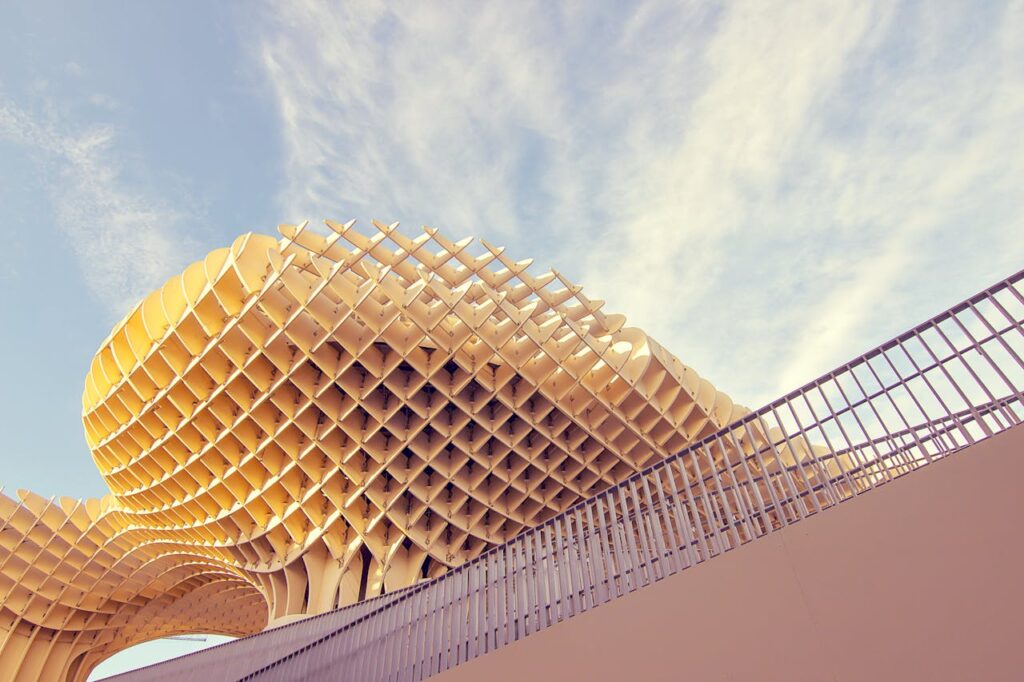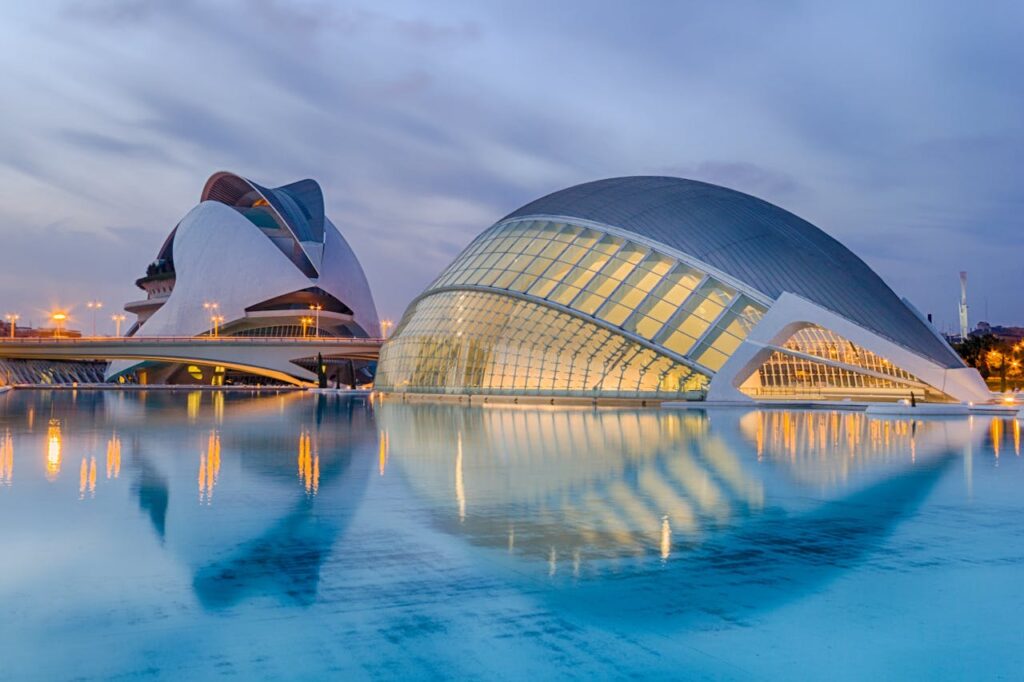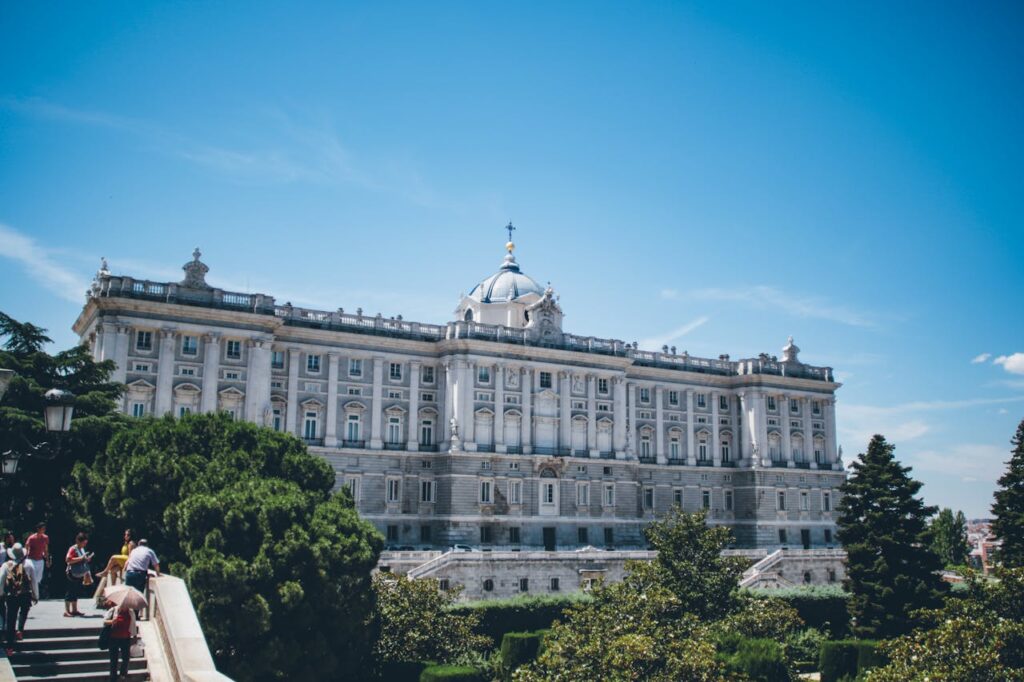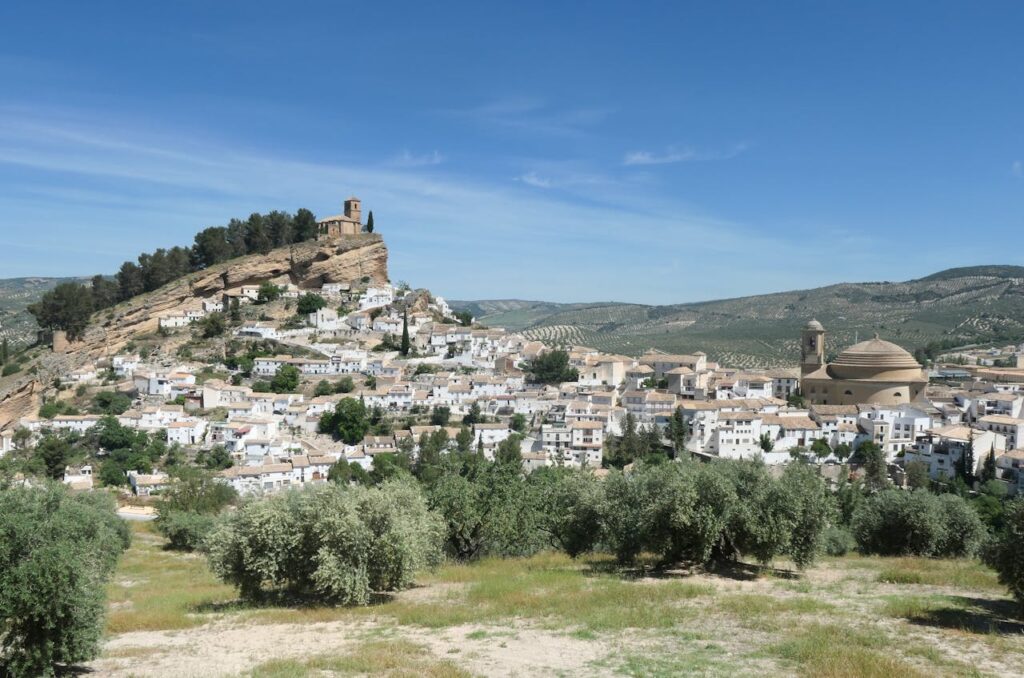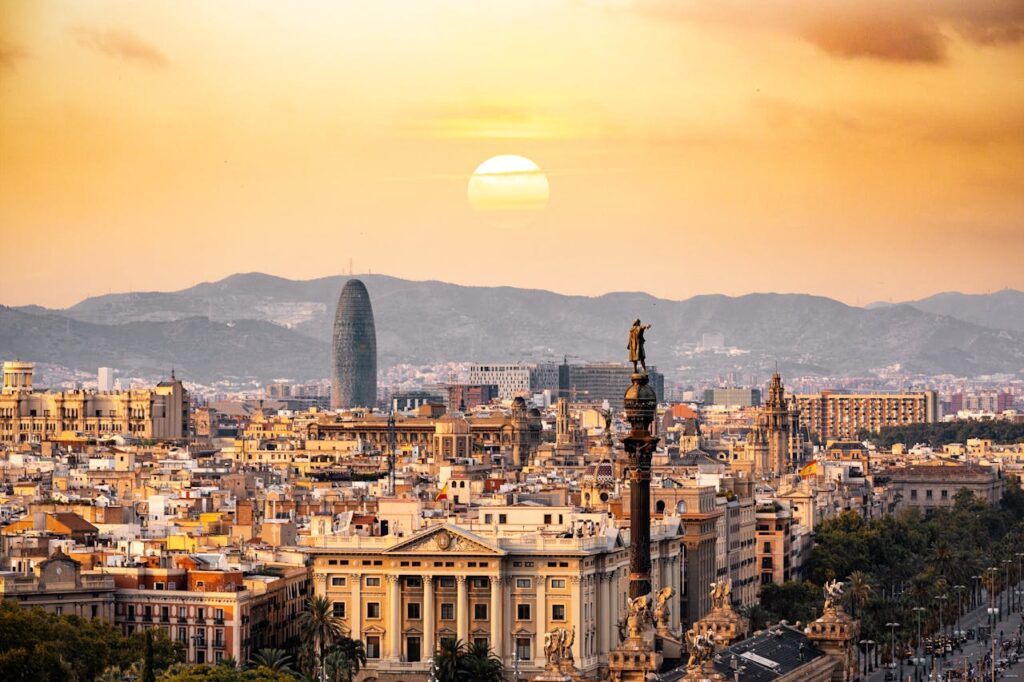Seville, the capital of the Andalusia region in southern Spain, is a city rich in history, culture, and vibrant traditions. Known for its stunning architecture, lively flamenco scene, and delicious cuisine, Seville offers a unique blend of Moorish, Gothic, and Renaissance influences. The city’s charming old town, grand palaces, and picturesque plazas make it a must-visit destination. Here are some of the best places to visit in Seville, Spain:
Best Places to Visit
1. Seville Cathedral and La Giralda
Seville Cathedral, also known as the Cathedral of Saint Mary of the See, is the largest Gothic cathedral in the world and a UNESCO World Heritage Site. The cathedral is renowned for its impressive architecture, intricate altarpiece, and stunning stained glass windows. Inside, visitors can see the tomb of Christopher Columbus. The cathedral’s bell tower, La Giralda, was originally a minaret of the mosque that once stood on the site. Climbing to the top of La Giralda offers panoramic views of the city.
- Key Attractions: Gothic architecture, Christopher Columbus’s tomb, panoramic views.
- Activities: Historical exploration, sightseeing, climbing La Giralda.
- Location: Av. de la Constitución, Seville, Spain.
2. Real Alcázar of Seville
The Real Alcázar of Seville is a royal palace originally developed by Moorish Muslim kings and later expanded by Christian monarchs. It is one of the oldest palaces still in use in Europe and a UNESCO World Heritage Site. The palace is a stunning example of Mudéjar architecture, with its intricate tilework, ornate arches, and lush gardens. Highlights include the Patio de las Doncellas, the Hall of Ambassadors, and the beautiful gardens filled with fountains and orange trees.
- Key Attractions: Mudéjar architecture, beautiful gardens, historic rooms.
- Activities: Exploring palace grounds, walking in the gardens.
- Location: Patio de Banderas, Seville, Spain.
3. Plaza de España
Plaza de España is one of Seville’s most iconic landmarks, built for the Ibero-American Exposition of 1929. The semi-circular plaza features a grand building with a central tower and two side towers, adorned with colorful ceramic tiles representing different regions of Spain. The plaza is surrounded by a canal, and visitors can rent rowboats to explore the waterway. The adjacent Parque de María Luisa offers beautiful gardens and walking paths.
- Key Attractions: Ceramic tile decorations, boating on the canal.
- Activities: Sightseeing, rowing, relaxing in the park.
- Location: Av. de Isabel la Católica, Seville, Spain.
4. Barrio Santa Cruz
Barrio Santa Cruz is Seville’s historic Jewish quarter and one of the city’s most picturesque neighborhoods. The area is characterized by its narrow, winding streets, whitewashed houses, and charming squares. Highlights include the Plaza de los Venerables, the Callejón del Agua, and the Murillo Gardens. The neighborhood is also home to numerous tapas bars, restaurants, and boutiques, making it a great place to explore and enjoy Seville’s culinary delights.
- Key Attractions: Historic streets, tapas bars, charming squares.
- Activities: Walking tours, dining, shopping.
- Location: Santa Cruz, Seville, Spain.
5. Metropol Parasol (Las Setas)
Metropol Parasol, popularly known as “Las Setas” (The Mushrooms), is a modern wooden structure located in La Encarnación square. Designed by architect Jürgen Mayer, it is one of the largest wooden structures in the world. The structure consists of six parasols in the shape of giant mushrooms and features an archaeological museum, a market, a panoramic terrace, and a walkway offering stunning views of Seville. It’s a perfect blend of contemporary design and historic surroundings.
- Key Attractions: Modern architecture, panoramic views.
- Activities: Exploring the structure, enjoying city views.
- Location: Plaza de la Encarnación, Seville, Spain.
6. Torre del Oro
The Torre del Oro, or Tower of Gold, is a historic watchtower located on the banks of the Guadalquivir River. Built in the 13th century, the tower was used to control access to the river and protect the city from invaders. Today, it houses a small maritime museum with exhibits on Seville’s naval history. Visitors can climb to the top of the tower for panoramic views of the river and the city.
- Key Attractions: Historical exhibits, panoramic views.
- Activities: Museum visit, sightseeing.
- Location: Paseo de Cristóbal Colón, Seville, Spain.
7. Flamenco Shows
Seville is the birthplace of flamenco, and experiencing a live flamenco show is a must-do activity in the city. The neighborhood of Triana is particularly famous for its flamenco heritage. Several venues throughout the city offer authentic performances, featuring passionate singing, guitar playing, and dancing. Popular venues include El Palacio Andaluz, La Casa del Flamenco, and Tablao El Arenal. Attending a flamenco show provides an intimate glimpse into this traditional Andalusian art form.
- Key Attractions: Flamenco music and dance, vibrant atmosphere.
- Activities: Watching a live flamenco performance.
- Location: Various venues across Seville, Spain.
8. Plaza de Toros de la Maestranza
Plaza de Toros de la Maestranza is one of Spain’s most famous bullrings and a symbol of Seville’s bullfighting tradition. Built in the 18th century, the bullring is an architectural masterpiece with a distinctive Baroque facade. Visitors can take guided tours of the arena, the bullfighting museum, and the chapel where matadors pray before a fight. The bullring is still active and hosts bullfights during the Feria de Abril, one of Seville’s most important festivals.
- Key Attractions: Historic bullring, bullfighting museum.
- Activities: Guided tours, learning about bullfighting culture.
- Location: Paseo de Cristóbal Colón, Seville, Spain.
9. Archivo de Indias
The Archivo de Indias, or General Archive of the Indies, is a historic building that houses valuable documents related to the Spanish Empire in the Americas. The archive, a UNESCO World Heritage Site, contains maps, drawings, and records from the 16th to the 18th centuries. The building itself is an architectural gem, with a beautiful Renaissance design. Visitors can explore the exhibits and learn about the history of Spain’s exploration and colonization of the New World.
- Key Attractions: Historic documents, architectural design.
- Activities: Historical exploration, visiting exhibitions.
- Location: Av. de la Constitución, Seville, Spain.
10. Triana
Triana is a lively neighborhood located across the Guadalquivir River from Seville’s city center. Known for its vibrant culture, colorful streets, and strong traditions, Triana has a distinct identity. The area is famous for its ceramic workshops, where visitors can see traditional pottery being made. Triana is also a great place to experience authentic Andalusian cuisine, with numerous tapas bars and restaurants offering local specialties. The Triana Market and the Castillo de San Jorge, a historic fortress, are also worth visiting.
- Key Attractions: Ceramic workshops, tapas bars, Castillo de San Jorge.
- Activities: Shopping, dining, exploring.
- Location: Triana, Seville, Spain.
Summary Table
| Place | Description | Key Attraction | Location |
|---|---|---|---|
| Seville Cathedral and La Giralda | Largest Gothic cathedral with iconic bell tower | Christopher Columbus’s tomb, La Giralda | Av. de la Constitución, Seville |
| Real Alcázar of Seville | Royal palace with stunning Mudéjar architecture | Beautiful gardens, historic rooms | Patio de Banderas, Seville |
| Plaza de España | Grand plaza with colorful ceramic tiles | Boating on the canal, ceramic decorations | Av. de Isabel la Católica, Seville |
| Barrio Santa Cruz | Historic Jewish quarter with charming streets | Tapas bars, narrow streets | Santa Cruz, Seville |
| Metropol Parasol (Las Setas) | Modern wooden structure with panoramic views | Panoramic terrace, walkway | Plaza de la Encarnación, Seville |
| Torre del Oro | Historic watchtower with a maritime museum | Historical exhibits, river views | Paseo de Cristóbal Colón, Seville |
| Flamenco Shows | Traditional Andalusian music and dance performances | Flamenco music and dance | Various venues, Seville |
| Plaza de Toros de la Maestranza | Historic bullring with a bullfighting museum | Bullring tours, museum | Paseo de Cristóbal Colón, Seville |
| Archivo de Indias | Archive with documents related to the Spanish Empire | Historic documents, Renaissance design | Av. de la Constitución, Seville |
| Triana | Lively neighborhood known for ceramics and cuisine | Ceramic workshops, tapas bars | Triana, Seville |
How to Reach Seville
By Plane
Seville is served by Seville Airport (SVQ), located about 10 kilometers northeast of the city center. The airport offers domestic and international flights. From the airport, travelers can reach the city center by taxi, bus, or airport shuttle services.
#
By Train
Seville’s main train station, Sevilla Santa Justa, is well-connected to other major cities in Spain, including Madrid, Barcelona, and Málaga. The high-speed AVE trains make travel between cities convenient and efficient.
By Bus
Seville’s main bus station, Plaza de Armas, offers long-distance and local bus services. Several bus companies operate routes to Seville from cities across Spain and neighboring countries.
By Car
Seville is accessible by car via major highways, including the A-4 from Madrid and the A-92 from Granada. Car rental options are available for those who prefer to drive, and the city offers several parking facilities.
Best Time to Visit Seville
The best time to visit Seville is during the spring (March to May) and autumn (September to November) when the weather is mild and pleasant. These seasons are ideal for exploring the city’s outdoor attractions and enjoying cultural events. The summer months (June to August) can be very hot, with temperatures often exceeding 35°C (95°F), making it less comfortable for sightseeing. Winter (December to February) is cooler but still relatively mild, making it a good time to visit without the crowds.
Travel Tips
- Local Cuisine: Seville offers a rich culinary scene with a variety of traditional Andalusian dishes. Be sure to try local specialties like gazpacho, salmorejo, and tapas. The city is known for its lively tapas bars, where you can sample a variety of small dishes.
- Cultural Etiquette: Sevillians are known for their warm and welcoming nature. It’s customary to greet people with a smile and a handshake. When visiting religious sites, dress modestly and be respectful of local customs. Flamenco shows are a key part of Seville’s culture, and it’s important to show appreciation for the performers.
- Transportation: Seville has an efficient public transportation system, including buses and trams. The city center is compact and walkable, making it easy to explore on foot. Taxis and ride-sharing services are also available.
Itinerary Suggestions
One-Day Trip
- Morning: Start your day with a visit to Seville Cathedral and climb La Giralda for panoramic views. Then, explore the Real Alcázar and its beautiful gardens.
- Afternoon: Have lunch in Barrio Santa Cruz and explore the charming streets. In the afternoon, visit the Plaza de España and take a boat ride on the canal.
- Evening: Enjoy dinner at a local tapas bar and end your day with a live flamenco show.
Weekend Getaway
- Day 1: Begin with visits to Seville Cathedral, La Giralda, and the Real Alcázar. In the afternoon, explore the Archivo de Indias and stroll through the Plaza de España. In the evening, dine in Triana and enjoy a flamenco show.
- Day 2: Start with a morning visit to the Metropol Parasol and take in the views from the walkway. Then, visit the Torre del Oro and learn about Seville’s maritime history. In the afternoon, explore the bullring at Plaza de Toros de la Maestranza. Conclude your trip with a relaxing stroll along the Guadalquivir River.
Seville’s rich history, vibrant culture, and stunning architecture make it a captivating destination in Spain. Whether you’re exploring its historic landmarks, enjoying its culinary delights, or immersing yourself in its lively atmosphere, Seville offers a memorable experience for every traveler.

